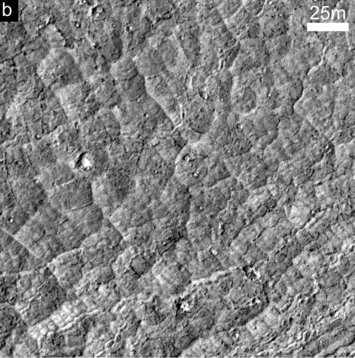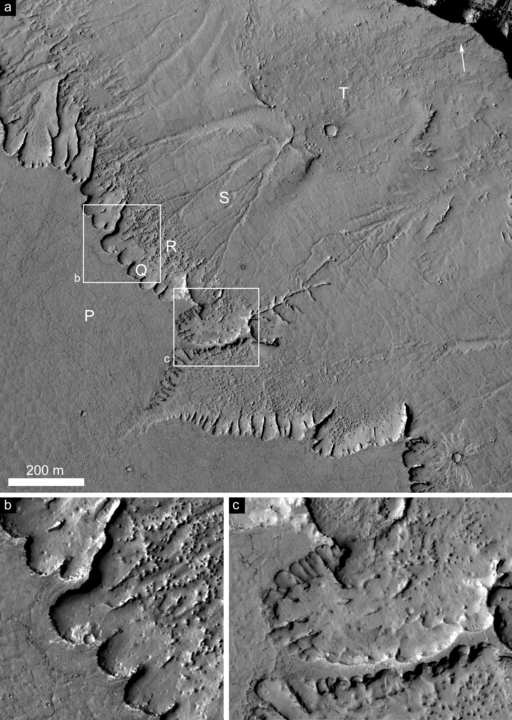[/caption]
Remember the polygon-shaped landforms at Mars north polar region that the Phoenix lander studied? The polygons are produced by seasonal expansion and contraction of ground ice, and these shapes have been found in other regions on Mars as well. New studies of images from the HiRISE camera on the Mars Reconnaissance Orbiter indicates that the Martian surface near the equator experienced freeze-thaw cycles as recently as 2 million years ago. This means Mars had significantly warmer weather in its recent past, and has not been locked in permafrost conditions for billions of years as had been previously thought.
The HiRISE images show polygon-patterned surfaces, branched channels, blocky debris and mound/cone structures.
Dr. Matthew Balme, from The Open University, made the new discovery by studying detailed images of equatorial landforms that formed by melting of ice-rich soils, such as the polygons, branched channels, blocky debris and mound/cone structures. These are all found in an outflow channel, thought to have been active as recently as 2 million to 8 million years ago. Since the landforms exist within, and cut across, the pre-existing features of the channel, this suggests that they, too, were created within this timeframe.

All of these features are similar to landforms on Earth typical of areas where permafrost terrain is melting.
“The features of this terrain were previously interpreted to be the result of volcanic processes,” said Balme. “The amazingly detailed images from HiRISE show that the features are instead caused by the expansion and contraction of ice, and by thawing of ice-rich ground. This all suggests a very different climate to what we see today.”
This also means as the shorter the time period since the last warm weather on the planet, the better the chance that any organisms that may have lived in warmer times are still alive under the planet’s surface.
“These observations demonstrate not only that there was ice near the Martian equator in the last few million years, but also that the ice melted to form liquid water and then refroze,” said Balme. “And this probably happened for many cycles. Given that liquid water seems to be essential for life, these kinds of environments could be a great place to look for evidence of past life on Mars.”
Source: STFC


More evidence for a dynamic climate! OTOH the amount of high quality photo data needed to find these things out is disheartening considering the volume of the solar system.
“Danger, Will Robinson. Does not compute.” (For me.)
If the environment is stable, the likelihood for adapted organisms thriving would be the greatest. If the environment is dynamic, the likelihood for radiative differentiation would be the greatest. This has on earth resulted in both the most functional (eukaryotes) and most robust (archaebacteria) lifeforms. As long as there are resources available it seems to me the relation between evolution and its environment is a win-win situation.